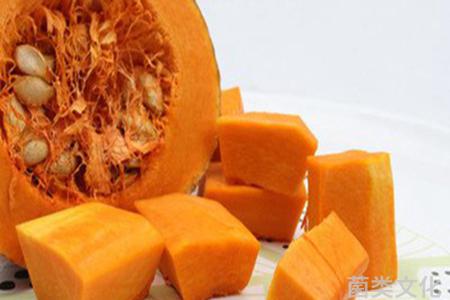
云南饮食文化22种野生食用菌的烹饪应用
简介:听说2023年第一批野生蘑菇已经上市,随着盛夏雨季的到来,云南人已经按捺不住探索野生蘑菇的欲望。 面对这大自然的丰厚馈赠,大家都摩拳擦掌,准备“试毒”。 温馨提示:不采摘的菌类不要食用; 野生菌不宜冷吃,必须炒熟; 如果进食后感觉不适(恶心、呕吐、头晕、视力模糊、幻听、幻视),请立即去医院。 本文向您介绍了云南22种常见野生蘑菇的特点及烹饪应用。

野生真菌
云南野生食用菌概况
云南堪称细菌的故乡,历来有“细菌出云南”之说。 据研究,人类食用真菌已有3000多年的历史。 云南复杂的地形地貌、多样的森林类型、土壤类型以及独特的立体气候条件,孕育了丰富的野生菌资源。 云南食用菌产量占世界食用菌产量的一半以上,占中国食用菌产量的三分之二。 每年夏季6-9月,雨季过后,各种真菌开始生长。 云南野生蘑菇生于山林之中。 它们是天然、绿色、健康的原料。 因此,云南是当之无愧的“野生菌王国”。
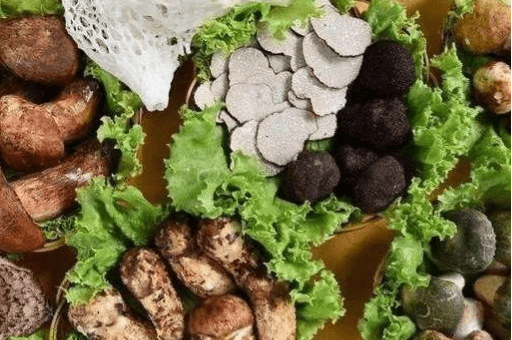
云南盛产野生菌类
云南常见野生食用菌及烹饪应用
01.美味的牛肝菌
美味牛肝菌又称白牛肝、白牛头、大脚菇等。 云南俗称“白牛肝”,是世界著名的食用菌,分布广泛。 美味的牛肝菌菌盖呈扁平的半球形,表面光滑且不粘边,边缘钝,颜色呈黄棕色、土棕色或红棕色。 果肉白色,厚而柔软,受伤后不变色。 菌柄浅棕色或浅黄棕色,近圆柱形,实心。 夏季单生或散生于林中。 是云南省优良野生食用菌之一。 云南省是美味牛肝菌分布最广、产量最大的省份,覆盖海拔1000~2200m的地区。 除西双版纳、德宏等亚热带地区外,全省各地均有白牛肝生长。

美味的牛肝菌
白牛肝菌热量低,富含蛋白质、膳食纤维、B族维生素、钾、铁。 由于其钠含量极低,是一种高钾低钠的保健食品。 烹调加工会破坏白牛肝菌的维生素,而快火快炒的烹调方法可以减少维生素的损失。 炒美味的牛肝菌和多鲜蘑菇,可以用大蒜、火腿、云南特有的皱青椒等食材来烹制。 味道鲜美,略带酸味。 白牛肝也可以切片晒干保存。 食用前先用水泡软,然后晾干,加入配料炒匀。 味道不如新鲜蘑菇。

青椒牛肝菌
02.小梅牛肝菌
小型的美洲牛肝菌,在云南民间被称为“健守青”。 牛肝菌属是一种外生菌根真菌。 牛肝菌属体型中等,是中等大小的牛肝菌。 呈半球形,边缘完整光滑,粉红色或暗红色,表面有细绒毛。 菌管的孔隙致密、细小。 黄绿色或棕色。 该菌菌肉呈淡黄色,受伤后立即变蓝色,故俗称“见蓝手”。 菌柄近圆柱形,上端稍细,色淡,中下端粗而膨大,呈椭圆体,粉红色或栗色,有黄色或栗色网状。 夏秋季广泛分布于滇中地区的松林或混交林中。 它是一种既可食又可药用的真菌。

小美国牛肝菌
小梅牛肝菌富含蛋白质、维生素B2、钾、铁,是高钾低钠的健康食品。 牛肝菌小梅的维生素B2含量丰富,是黑牛肝菌肝的3倍。 小美洲牛肝菌加热不充分可能会引起食物中毒,因此食用前应充分加热炒熟。 小梅牛肝菌是云南各族人民最喜欢吃的野生蘑菇之一,肉质厚实,口感酥脆滑爽,菌香浓郁,风味独特。 一般切成片,与皱青椒、蒜一起炒,食之鲜、脆、滑、爽口。 也可搭配干辣椒、大蒜和热油食用。
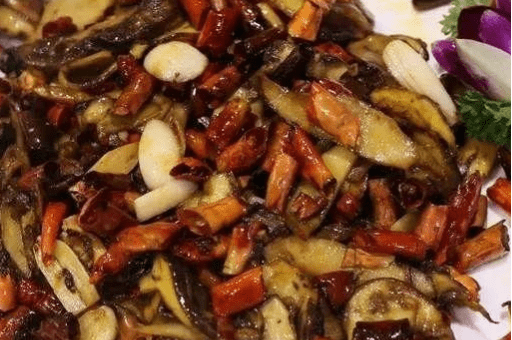
干辣椒变绿了
03.灰棕色牛肝菌
灰褐色的牛肝菌,云南民间称为黑牛肝。 黑牛肝菌属中型牛肝菌,呈半球形,边缘完整光滑,呈古铜色或黑色,表面光滑,管孔粗,颜色为棕色; 菌肉近白色,厚实,患处变成淡紫色或淡黄色。 菌柄古铜色,近圆柱形,上端稍细,中下端稍肥大。 黑牛肝菌体大,肉质细嫩。 在西欧国家被宣传为著名的营养食品,是菌类中销量最高、汇率最高的产品之一。 黑牛肝菌属外生菌根真菌,夏秋季散生或散生于松林或混交林中。 云南是黑牛肝菌的主产区。

灰棕色牛肝菌
黑牛肝菌富含蛋白质、钾、铁,是高钾低钠的健康食品。 新鲜黑牛肝菌的维生素B2含量是西红柿的10倍,是肉类的2-3倍。 是补充维生素B2的良好食品。 黑牛肝菌具有补铁的能力,多吃有利于补铁。 黑牛肝菌香气浓郁,风味独特,是云南常见的野生蘑菇之一。 一般切成片,与皱青椒、蒜一起炒,菜色黑绿白,味道特别鲜美。 也可以配上干辣、蒜末,在热油中干炒,除去部分水分,使菌香更加浓郁。

干辣椒黑牛肝
04. 牛肝菌
牛肝菌(Boletus bolete),在云南俗称黄光头、黄犁铧、黄牛肝,是一种中大型真菌。 黄色的薄头叶体肥厚,幼时边缘卷起,成熟时展开,有脂肪般的感觉。 菌盖表面有许多凹凸不平的痈状突起,成熟时龟裂,颜色土黄色。 菌管浅黄棕色。 菌柄黄棕色圆柱形,粗,质硬而脆,上端有金黄色小斑点。 基部有鳞片,易脱落。 夏秋季节,广泛分布于滇中、东、西的针叶混交林或阔叶林中。
牛肝菌
黄磊头富含蛋白质、维生素B2、钾、铁。 是一种高钾低钠的健康食品。 营养价值比黑牛肝高。 黄馒头硬而脆,可以生吃。 民间多切生片与青椒、大蒜一起快速炒制。 它们鲜、香、甜、脆。 也可以在锅里烧热油,炒干辣椒和大蒜。 颜色会变深,质地会软到中硬,有浓郁的蘑菇香气。
干辣椒黄牛肝菌
05.松露鸡(鸡块)
鸡松露又称鸡松露、伞菌、白蚁菌等。鸡松露是伞菌目担子菌亚门、五倍子属的一种具有中型至大型子实体的真菌。 它是夏秋季节生长在白蚁巢穴上的珍贵野生食用菌。 当真菌年轻时,它看起来像一把闭合的伞。 成熟时,菌盖伸展开来,就像一把撑开的阳伞或一顶遮雨的斗笠。 因皮色不同,故名黑皮(绿皮)、黄皮、白皮、草皮鸡枞,其中以黑皮鸡枞最好。 分布于我国西南、华南各省,其中以云南分布最广、产量最大、质量最好。

鸡肉松露
鸡枞比牛肝菌含水分多,营养成分少。 但与普通蔬菜相比,它仍富含蛋白质、维生素B2、钾和铁。 鸡柑蛋白中含有丰富的谷氨酸,这是其味道特别鲜美的重要原因。 鸡枞肉质厚实,洁白细腻,肉质细嫩,味道清香甜脆,比鸡肉更加鲜美。 它是世界著名的野生食用菌,堪称“菌中极品”。

鸡枞树汤
中国人民吃鸡块的历史悠久,人们创造了生吃、腌、炒、煮、焖、焖、蒸、烤、炸等多种吃法。 滇菜中用鸡杉制作的菜肴有很多,其中最具代表性的有三鼎凉鸡、卤鸡、炒双鸡、三鲜鸡杉汤、鸡杉焖奶糕、炖双鸡、气锅鸡块、荷叶烤鸡块、油鸡枞等。鸡浆果是云南著名的特色食品。 它们有数百年的生产历史。 方法很简单:将新鲜鸡浆果洗净晾干,然后撕成条备用。 将辣椒、草果、八角、花椒炒香。 闻香后加入鸡块,中火煎至鸡块呈金黄色,香气四溢。 其味道鲜、香、辣、耐嚼、回味甜。 密封于瓶中后可长期保存。

油浸鸡枞
06.松茸蘑菇
松茸又称松茸、松茸、台湾木耳等。 松茸属于担子菌亚门和木霉科。 它们是松树和橡树等树木的外源菌根真菌。 菌盖厚实,扁平半球形至近扁平状,有黄棕色至栗棕色扁平纤毛鳞片,表面干燥。 菌肉洁白、肉嫩、有特殊香味。 云南主要分布在香格里拉和南华。
松茸被誉为“蘑菇之王”、“野生蘑菇之冠”,又被誉为“软黄金”。 松茸原本在云南被称为臭鸡杉,当地没人关心它。 20世纪80年代中期,日本商人发现云南盛产松茸并大量进口后,逐渐为人所知,身价倍增。 在云南,香格里拉和南华的松茸产量最大,品质最好。 松茸与松露、羊肚菌、鸡油菌并称为“四大名菌”。 它们具有独特而浓郁的香味,是世界上稀有、名贵的天然药用真菌。
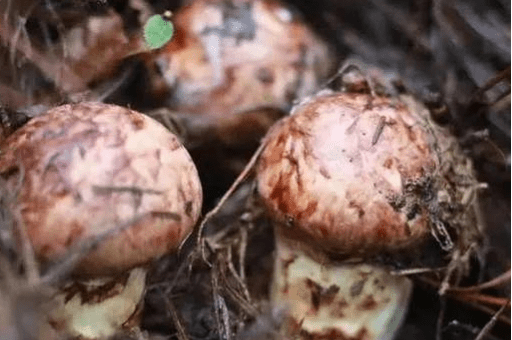
松茸
松茸富含氨基酸、微量元素、活性营养素、不饱和脂肪酸、维生素、丰富的膳食纤维和多种活性酶。 它还含有三种珍贵的活性物质,即双链松茸多糖、松茸多肽和世界上独特的抗癌物质——松茸醇。 它是世界上最珍贵的天然药用真菌。 松茸不仅营养均衡、充足,还具有提高免疫力、抗癌抗肿瘤、治疗糖尿病和心血管疾病、抗衰老美容、促进肠胃健康、保护肝脏等多种功效。 松茸具有浓郁的特殊香气,果肉洁白细嫩,厚实细腻,质地细腻,口感滑爽。 它广泛用于烹饪。 传统的做法是炭火烧烤和鸡汤。 近年来,松茸刺身、松茸蒸蛋等较受欢迎。 云南藏族的炭烤松茸更是经典。 松茸保留了炭烤的味道,比生鱼片松茸更多汁,更美味。
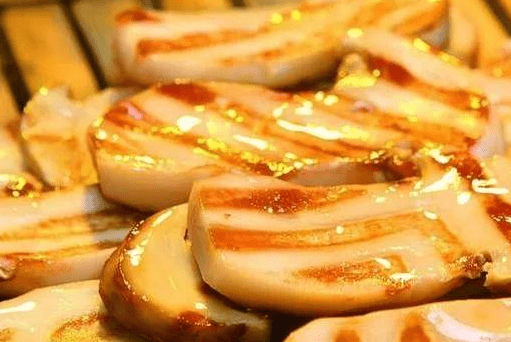
炭烤松茸蘑菇
07. 发根根孢菌
镓秆又名鸡块花、鸡枞花。 姬松茸属是属于姬松茸属和白蚁菌属的一种小真菌。 它是夏秋两季生长在白蚁巢穴上的野生食用菌。 它的形状像一只缩小的鸡。 年轻时,它看起来就像一把闭合的小伞。 盖子像雨帽一样伸展开来,中间有一个不太尖锐的突起。 分布于云南省云南中部和西南部。

鸡枞花
鸡块的水分含量高达97%,各种营养成分相对较低。 但与普通蔬菜相比,它们仍富含蛋白质、维生素B2、钾和铁。 鸡粽花一般是煮汤或炒着吃。 其鲜美可与鸡粽花相媲美。

鸡肉杉花汤
08. 鸡油菌
鸡油菌又名黄丝菌、蛋黄菌、黄花菌等。鸡油菌是担子菌门、喇叭科、鸡油菌属的总称。 云南市场常见的鸡油菌有鸡油菌、红鸡油菌、小鸡油菌、淡白鸡油菌、黄柄鸡等。 油料真菌5种。 夏秋季节生长于阔叶林和针叶林混交林或灌木丛中,以马尾松和栎混交林中最为常见。 鸡油菌的子实体很小,幼虫像指甲一样。 成熟时呈浅漏斗状,杏黄色如鸡油,故又称“杏蘑菇”。 其色泽鲜艳、香气浓郁、鲜嫩脆嫩,享誉世界。 美味的食用菌之一。 世界已知有70余种,我国16种,云南13种,主要集中在滇中、西南和西北地区。

鸡油菌
鸡油菌营养丰富,其中以胡萝卜素含量最高。 该蛋白富含人体必需氨基酸,是优质植物蛋白。 鸡油菌含有丰富的维生素B2,是普通蔬菜的15至40倍。 它们是补充维生素B2的优质食品。 鸡油菌可以单独食用,也可以与各种蔬菜和肉类一起食用。 烹调加工方法有炒、红烧、炖、煮等。常见菜肴有蒜炒鸡油菌、葱酱鸡油菌、银耳鸽蛋炖鸡油菌、炖田鸡腿鸡油菌、黑鸡油菌炖鸡油菌等。其中,最具特色的云南菜是“清汤鸡油菌”。
青椒炒鸡油菌
09. 松乳菇
乳酸菌松茸又名米熟菌、松茸、南瓜花、冬瓜花等。 松茸是担子菌纲、伞菌目、红菇科、红菇属的一种野生食用菌。 夏秋季节单生或群生于松林地面。 它是一种外生菌根真菌,与共生植物互利。 真菌子实体较小,幼时菌盖向内卷曲,成熟后变平,呈浅漏斗状,表面有同心环,呈浅红色、黄色至橙色。 菌褶浓密、直,与菌盖颜色相同,受伤后变绿。 菌肉乳白色至金黄色,汁液少,呈橙色或橙红色,气味芳香,味软,味微辣。 菌柄呈圆柱形,质地柔软,后中空。 由于其成熟较晚,在收割谷子时最为丰富,故民间又称“谷熟菌”。 产量最大的是云南中部。

成熟的菌类含有丰富的蛋白质、膳食纤维、B族维生素、铁和钾,其中以铁含量最丰富。 新鲜蘑菇含有丰富的铁质,与猪肝相似,是普通蔬菜的几十倍。 多吃有利于补充铁质。 谷物成熟的蘑菇可以生吃。 口感松软,肉质脆嫩,汁液粘稠,略带辛辣味。 它们通常单独食用或与各种蔬菜、肉类和海鲜一起炒。 滇菜“固树蘑菇”以固树蘑菇、甜瓜、云南宣威火腿为主料,辅以各种配料和调料制成。 其色泽鲜艳、香、脆、嫩、辣、味美。

青椒蘑菇
10. 桨菇
瓜蒌又名老人头、松菊、山老宝等。 是一种木耳,口蘑科的一种大型真菌。 多生长于海拔1200m以上的松树、冷杉、油杉等针叶林、阔叶林中潮湿、松软的地面上。 生长于云南省高寒山区及秋季气温较凉时。 野生食用菌乳头梭菌子实体粗壮、结构致密。 幼时白色或灰白色,成熟时黄棕色,有光泽。 菌肉雪白,厚实致密,银耳裙部致密延长,菌柄中上部有银耳环,为大而明显的双层膜质。 。 主要分布于滇西北、滇西、滇东北等高海拔山区,滇南部分高海拔山区也有生长。

乳头蘑菇
蝴蝶乳头菇具有低热量、低脂肪、高膳食纤维的营养特点。 与其他食用菌相比,其营养成分相对较低,但仍明显高于普通蔬菜。 其中以维生素B2、钾、铁、硒等较为重要。 富有的。 新鲜的蝴蝶乳头菇有烟熏味,味道略带辛辣,直接吃的话味道并不好。 民间用沸水煮一会儿,然后用冷水浸泡,然后炒。 吃起来像竹笋片,鲜嫩爽脆,味道鲜美。

青椒炒老头菇
11. 虫草莲座丛
红皮菌在云南民间称为干巴菌。 干巴菌是一种与松属植物共生的外生菌根真菌。 其菌丝分化为子实体的条件十分复杂,目前尚未见人工栽培成功的报道。 纤维质皮革,年轻时柔软易折,成熟时干燥坚韧。 扇形或莲座形花瓣自基部分枝,向上分裂成簇状珊瑚形或扫把形分枝,颜色灰白色至灰黑色或橙黄色至黄棕色。 因子体水分较少,呈干性,如云南当地腌制的牛肉干,故名“干菌”。 与其他菌类相比,干菌生长缓慢,从子实体形成到成熟采收需要3~4周的时间。 因此,上市时间比其他食用菌晚1个月左右。

干巴菌
干巴菌是云南特有的特有名贵野生食用菌,主要生长于滇中高原红土针叶林和云南松林中。 昆明、玉溪、楚雄、曲靖等地为主产区。 石斛子实体中混有3%的植被凋落物,这是石斛的一个独特特征,但也给石斛的食用加工带来了很多麻烦。 一般将干蘑菇撕成条状,除去中间隐藏的植被枯枝落叶和泥土,洗净沥干后再烹调。 它对干菌的清洁非常讲究,必须反复擦洗,去除污垢和细沙。

清洁干燥细菌
干菌富含蛋白质、维生素B2、E、钾、铁、硒和膳食纤维,其中以硒含量最高。 云南民间将巴厘干与富含硫氨基酸的火腿、鸡蛋一起食用,弥补了氨基酸组成的缺陷,大大提高了罗勒干蛋白质的营养价值。 干香菇可与云南特有的皱皮青椒、宣威火腿、干红辣椒、鸡蛋、白菜等一起炒制。由于干香菇具有独特的香气,无论如何烹调和加工,都香浓口口。 -浇水。 干巴菇也可以生吃。 其味道鲜、脆、甜。 一般在其他凉菜中添加少量,以增色添味。 油干香菇是将干香菇放入热油中除去部分水分,冷却后与油一起放入密封容器中,取出后直接食用,可保存1个以上年。

干青椒
12. 多汁牛奶蘑菇
肉质乳菇又名乳菌、红乳菌、乳菌、米汤菌等。乳菌是担子菌纲、伞菌目、红菇科、红菇属的一种野生食用菌。 夏秋季节单生或群生于松林地面。 它是一种外生菌根真菌,与共生植物互利。 子实体较小,幼时菌盖呈半球形,成熟时扁平,中心有浅凹陷,表面有线状纹理,呈橙红色、红棕色或深梨色。 真菌致密、直立,呈白色或乳黄色,受伤后变成棕色。 木耳果肉含有丰富的白色乳胶状汁液,故俗称“乳木耳”。 菌柄光滑圆柱形,与菌盖颜色相同,质硬而脆。 乳酸菌遍布云南各地,是乳酸菌中数量最多的种类。

等离子体
奶浆是一种低热、高钾、低钠的健康食品。 它还富含蛋白质、维生素B2和铁。 乳木耳呈白色乳白色,粘稠,味道柔和,果肉酥脆,味微辣。 常单独食用或与各种蔬菜、肉类和海鲜一起炒食。 滇菜“双流牛奶蘑菇”以牛奶蘑菇、鸡肉、云南宣威火腿为主料,辅以各种配料和佐料,色泽鲜艳、香、脆、嫩、辣、鲜美。
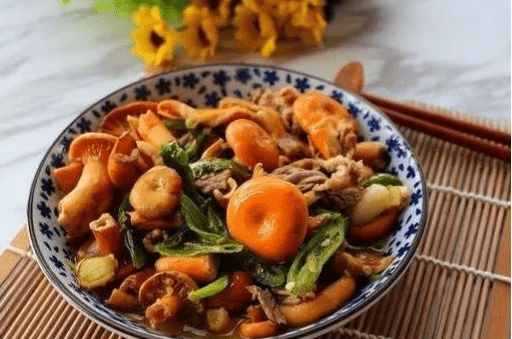
炒柠檬草
13. 红蜡菇
红蜡菇也叫仙人掌。 皮条菌是红蜡藤、紫晶蜡菇、红榛蜡菇三种真菌的统称。 它属于姬松茸属真菌,子实体较小。 新鲜的时候,是用水泡过的。 菌肉薄,肉红色、浅红棕色或深蓝紫色。 木耳裙边稀疏,质地蜡状。 菌柄粗呈圆柱形,颜色与果肉相同,纤维坚韧,内部中空。 广泛分布于云南各地,夏秋散生或群生于林地或腐枝上。

银屑病
欢喜草是一种低热量、高膳食纤维的野生食用菌。 皮子薄,韧,近乎革质,口感软,味道一般。 云南民间饮食中常配以蒜、葱、辣椒等炒菜。 可以起到增强鲜味和风味的作用。
炒仙人掌
14. 红酱奶香菇
红色汁液的乳菇,云南民间称为铜绿菌、鸡血菌。 铜绿假单胞菌是担子菌纲、伞菌目、红菇科、红菇属的一种野生食用菌。 夏、秋季单独或群生于松林中。 它是一种外生菌根真菌,与共生植物互利。 铜绿子实体中等,菌盖浅漏斗状,边缘内卷,橙红色至暗红色,新鲜时表面微粘。 菌体粗直、致密,深紫色,受伤后变成蓝绿色,似生锈的铜斑,故民间形象中称为“铜绿菌”。 因菌肉有淡红色和紫色斑点,且汁液较少,呈酒红色或血红色,故又称“鸡血菌”。 菌柄光滑,呈圆柱形,菌盖颜色相同,向下渐细,略弯曲。 它是固体和脆性的。 主要产于云南滇中地区,是滇中市场常见的泌乳蘑菇。

铜绿假单胞菌
铜绿藻含有丰富的蛋白质、膳食纤维、钾和铁。 铜绿肉质不那么酥脆多汁,味道温和柔软。 多与各种蔬菜、肉类、海鲜一起炒。 由于铜绿味淡,所以配料要浓,一般与云南宣威火腿、葱、蒜、辣椒等一起烹制。

炒绿脓杆菌
15. 绿红菇
红菇,云南民间又名青头菇、青头木耳、绿面木耳、清汤木耳等。 绿头真菌是红菇属的一种。 子实体中等大小。 幼时的菌盖呈半球形,成熟时呈扁平状。 它的中心有一个浅凹陷。 表面绿色或灰绿色,裂成小片,微粘。 滑。 菌褶为白色片状,菌柄上下呈白色圆棒状。 分布于云南大部分地区,是云南省产量最多的食用菌之一。 夏秋季单独或群生于松树、橡树或针阔叶混交林中。

绿头真菌
由于含水量较高,绿脓杆菌的各种营养成分相对较少,但与普通蔬菜相比,仍然富含蛋白质、维生素B2、钾和铁。 绿头木耳肉厚、味淡、软。 它可以生吃,可以单独食用,也可以与各种蔬菜、肉类和海鲜一起食用。 也可煎、焖、蒸、烤、煮等加工。 微甜,粘稠,清爽。 常见菜肴有酿蘑菇、红烧蘑菇、椒盐蘑菇、酸辣蘑菇、白酱蘑菇、臭豆腐焖蘑菇、菱角炒蘑菇、蒸蘑菇等。
蒸锅青头菇
16. 橙色马勃
橙色硬皮马勃又名马勃、牛眼马勃等。橙色马勃是担子菌亚门、硬藻属的重要大型真菌。 夏秋季节在林中单生或群生,先埋入土中,成熟后部分或全部露出地面。 云南主产于云南中南部。

马皮博
橙硬皮马勃富含蛋白质、膳食纤维、维生素B2、钾、铁等。新鲜的橙硬皮马勃没有特殊气味,味道一般。 它是用民间鲜蘑菇片炒制而成。 可以与蔬菜或肉类一起炒。 由于其味道清淡,常与葱、姜、蒜、辣椒等辛辣菜肴搭配食用。 口感脆嫩。
干辣椒枫叶
17. 真菌
木耳又称黑木耳、云木耳、光木耳等。 真菌是担子菌纲、木犀科、木耳属的著名食用菌和药用菌。 夏、秋季密集丛生于阔叶树或针叶杉树的树干或腐烂处,主要是橡树、榆树、杨树、榕树、金合欢等木材上。 Fresh black fungus is thin and soft, shallow disc, ear, fan or irregular shape, smooth or slightly wrinkled surface, reddish brown or tan. After drying, it shrinks into a dark brown uneven irregular shape, with short hairs on the surface, and the texture is hard and brittle. The black fungus is the top grade with tenderness, large strips, thick flesh, dark brown and shiny. Yunnan is the main producing area of wild fungus, mainly wrinkled fungus, which is rich in rotten wood in the forests of southwest Yunnan.

Wild black fungus
Black fungus has the nutritional characteristics of low heat, low fat, high soluble dietary fiber, high potassium, low sodium, high iron, and high calcium. my country has a history of eating black fungus for more than 2,000 years. As early as the Spring and Autumn and Warring States Periods, black fungus has become a delicacy at the banquets of emperors and princes. The black fungus meat is thin and crisp, with a fresh smell, light taste, smooth and refreshing. When making dishes with black fungus, you can add any seasonings according to your personal preference, and make various delicious dishes through cold, pickled, stir-fried, boiled, stewed, steamed, braised and other cooking processes.
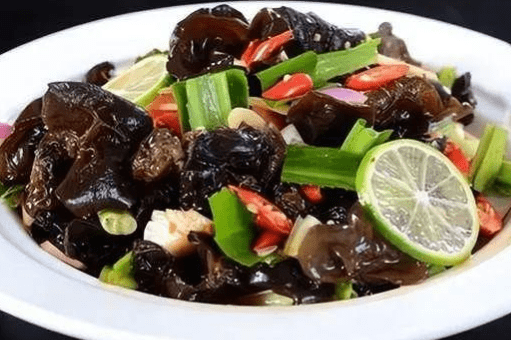
Dai flavor black fungus
18. Arbuscular corals
Arbuscular corals are also called broom fungi and brush fungi. Broom fungus is a common name for a class of edible fungi in the coral fungus Arbushophora. They grow in groups on broad-leaved forests and coniferous forests on rotting wood or humus, and the fruiting bodies are coral-like. The stalk is short and thick, the flesh is white, pink or other, and it is found in all parts of Yunnan.

Broom fungus
Broom mushrooms are rich in dietary fiber, vitamin B2, E, potassium, iron, calcium, etc., and are one of the edible fungi with lower calorific value. Different broom fungi have different tastes, some are like green pea pods, some taste slightly sour or bitter, and some are mild, but they are only edible when they are just mature. After aging, they taste bad and are not easy to digest, so they are not suitable for consumption. Broom mushrooms are generally not eaten alone, and are mostly paired with various meat products, fried, mixed, stewed, stewed, etc.

Cold broom mushroom
19. Truffles
Truffles are also known as pig arch bacteria, truffles, pine hairs, coal black, and mountain skids. Truffles are a type of edible fungi in the subdivision Ascomycota, the order Truffles, the family Truffles, and the genus Truffles. They have no roots, stems, or leaves, and only have a brown-black ascomycete buried in the ground. They emit a peculiar fragrance that attracts wild boars. It is not edible, so it is also called “pig arch fungus” among the people. Truffle ascocarps are spherical, hemispherical, massive or irregular in shape. The truffles are light yellowish brown when young, brown, reddish brown to dark brown when mature, and dark brown (approximately black) when dried.It grows in coniferous and broad-leaved mixed forests or under coniferous forests at an altitude of 1600-2600m in Yunnan and Sichuan

Archobacter suis
Humanity’s understanding of truffles began more than 2,000 years ago, but written records only exist for more than 200 years, and truffles were first discovered in China in 1987. There are 60 known species of truffles in the world, the most precious of which are black spores and white truffles. There are 25 species found in China, mainly the Indian truffle found in northwest Yunnan and the Chinese truffle found in Huili, Sichuan. Yunnan is the main producing area of truffles, among which Indian truffles are unique to Yunnan. They mature in winter and have irregular spherical ascocarps. The mature ascocarps are dark brown and black, hard as stone, have a strong fragrance, and often grow in piles. In the nest of bacteria. The appearance and taste of Indian truffles are very similar to the most expensive black spores truffles in Europe, and they have extremely high edible and commercial value.
Truffles are rich in protein, and the umami amino acids (glutamic acid, glycine, aspartic acid, and alanine) in truffles are as high as 36%, which is the reason why truffles taste extremely delicious. Truffles are one of the most precious and delicious edible fungi in the world. They are praised by Europe and the United States as the first of the four most delicious edible fungi in the world. Since truffles were first discovered in Europe, they are mostly eaten in Western food. In order to reduce the loss of aroma, butter, cream and vegetable oil are often used to absorb the aroma during the production process. Folks in Yunnan often use fresh truffle slices to cook chicken, ribs, pig’s feet, and mutton. The soup is extremely delicious and the mushroom slices taste like wax. It can also be eaten in oil, stir-fried, charcoal grilled, soaked in wine, etc. It has a fragrant aroma and extremely delicious taste. Fresh truffles can be eaten raw, crisp in quality and sweet in taste.

Braised chicken with black truffle
20.Golden Ear
Golden fungus is also called yellow fungus, golden tremella, golden tremella, etc. Golden fungus is a well-known edible and medicinal fungus in the Basidiomycetes, Tremella order, and Tremella genus. There are very few wild resources in nature. It grows on the rotten wood of broad-leaved trees, mainly oak trees, in summer and autumn. The fruiting body of fresh golden ear is golden yellow, irregular in shape, thick in flesh, and in the shape of brain-like gyriforms, so it is also called “brain ear”. Dried golden ear is hard in texture, yellowish-brown or brown in color, with an uneven surface and different shapes, most of which look like dried walnut kernels. The forest land in the valleys of the Jinsha River and Lancang River basins in northwest Yunnan and Yunnan is more productive.

Yellow fungus
Golden fungus is rich in nutrients and has the nutritional characteristics of low calories, low fat, high soluble dietary fiber, high carotene, high potassium, high calcium, high iron and high sodium. Golden fungus contains high sodium content, which is nearly 7 times that of fungus. Patients with high blood pressure should not eat large amounts. Golden fungus has thin skin, thick flesh, fragrant smell, light taste and delicate taste, smooth and refreshing. Golden fungus is suitable for making dishes, both sweet and salty, and can be fried, boiled, stewed, steamed, braised and other cooking processes. Common Yunnan dishes include: snowflake golden ear, fried golden ear with assorted fruits, braised golden ear with three delicacies, three peony three ears, rock sugar golden ear, golden ear quail egg, etc.

Rock sugar golden ear
21. Tremella fungus
Tremella is also called white fungus and white fungus. Tremella fuciformis is a dual-purpose edible and medicinal fungus in the Basidiomycetes, Tremella order, and Tremella genus. It grows on the rotten wood of broad-leaved trees in summer and autumn. It was originally wild and is now cultivated on a large scale. The texture of fresh Tremella fuciformis is soft and milky white translucent gelatinous. It shrinks after drying and becomes hard and brittle. Tremella is not only a treasure at banquets, but also a well-known medicine. It has been used as a fungus for both food and medicine since ancient times. Wild Tremella fuciformis is mainly distributed in the subtropics, but also in cold zones, temperate zones and tropics. During the Ming and Qing Dynasties, tremella with good natural quality has always been a good product for emperors and dignitaries to preserve their health and prolong their lives. As stated in “The Record of Royal Fragrance” written by De Ling, a female official in the Qing Dynasty: Tremella is extremely expensive in the market. , a small box of white fungus often costs one or twenty taels of silver.
银耳
Tremella is rich in carbohydrates and soluble dietary fiber. The content of calcium and iron in minerals is significantly lower than that of black fungus and golden fungus, but it is rich in potassium and has the characteristics of high potassium and low sodium. The white fungus meat is thin and crispy, has a fresh smell, light taste, and the gelatin is thick and sticky. The dishes made with white fungus can be sweet or salty, and seasonings can be added according to personal preference. It can be cooked, stewed, steamed, braised, etc. to make a variety of delicious dishes. The most popular dessert is the “Rock Sugar Tremella Soup”.

Rock sugar and white fungus soup
22. Bamboo fungus
Dictyophora is also called bamboo ginseng, bamboo fungus, net fungus, bamboo qin, etc. Dictyophora is basidiomycetes, phalloides, and fungi of the genus Dictyophora. Dictyophora solitary grows on the roots of old bamboo forests or yuba roots and yuba leaves in summer and autumn. It needs a certain humidity and sufficient oxygen. The fruiting body consists of caps, fungi Composed of skirt, stipe, and receptacle. The cap is bell-shaped, with greenish-brown sticky and smelly spores on it, and the fungus skirt is white and hollow grid-like. Its length is an important symbol to distinguish the long skirt and short skirt. Spindle-shaped or cylindrical, the pedicle is like a bowl, wrapped around the base of the stipe, with gray or pinkish purple patches. Wild bamboo fungus is hard to find. Every summer and autumn, fungus balls grow in bamboo forests. On sunny days, at 9-10 am, the balls start to break the balls and draw handles, and gradually shed snow-white net-like fungus skirts, and slim fruiting bodies appear. After 1:00 pm, the fruiting bodies are naturally poured and dissolved into a slurry, which makes it difficult for mushroom pickers to meet each other. Therefore, it is also called “ghost umbrella” and “queen of fungi” among the people. Northeastern Yunnan Province is rich in bamboo fungus and is the main producing area of bamboo fungus in my country.

野生竹荪
Dictyophora is rich in nutrients and is rich in protein, dietary fiber, carbohydrates, vitamin B, niacin, potassium, iron and selenium. Dried bamboo fungus is high in potassium, ranking first among edible fungi, and is an ideal food for potassium supplementation. Because of its rich nutrition, strong fragrance and delicious taste, bamboo fungus is listed as the first of the “four treasures” (bamboo fungus, Hericium erinaceus, shiitake mushroom, and white fungus), and it is a world-renowned edible fungus. However, the cap of Dictyophora fungus has a smell and the holder is hard and cannot be eaten. The edible part is only the mushroom skirt and the stipe, which are white as snow, rich in fragrance, crisp and tender in texture, very delicious in taste, and can keep dishes fresh for a long time without spoilage. Bamboo fungus can be eaten alone or paired with various meat and vegetable dishes. It can be boiled, stewed, grilled, stir-fried, and rinsed. The representative dish is braised chicken loin with bamboo fungus.

Braised chicken loin with bamboo fungus



